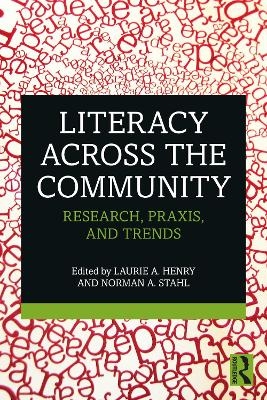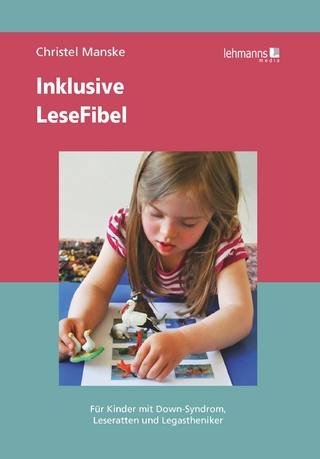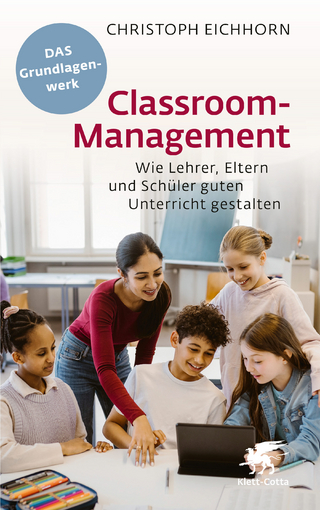
Literacy Across the Community
Routledge (Verlag)
978-0-367-46862-0 (ISBN)
This volume explores and evaluates community-based literacy programs, examining how they bridge gaps in literacy development, promote dialogue, and connect families, communities, and schools. Highlighting the diversity of existing literary initiatives across populations, this book brings together innovative and emerging scholarship on the relationship between P20 schools and community-based literacy programming. This volume not only identifies trends in research and practice, but it also addresses the challenges affecting these community-based programs and presents the best practices that emerge from them.
Collaborating with leading scholars to provide national and international perspectives, and offering a clear, birds-eye view of the state of community literacy praxis, chapters cover programming in a multitude of settings and for a wide range of learners, from early childhood to incarcerated youths and adults, and including immigrants, refugees, and indigenous communities. Topics include identity and empowerment, language and literacy development across the lifespan, rural and urban environments, and partnership programs. The breadth of community literacy programming gathered in a single volume represents a unique array of models and topics, and has relevance for researchers, scholars, graduate students, pre-service educators, and community educators in literacy.
Laurie A. Henry is Professor of Literacy and Dean of the Seidel School of Education at Salisbury University in Maryland, USA. Norman A. Stahl is Professor Emeritus of Literacy Education at Northern Illinois University, USA, and a Council of Learning Assistance and Development of Education Associations (CLADEA) National Fellow.
Foreword
Professional Literacies and Helping in the Community: The Limits of Dash-Literacies
James R. King
Introduction
Part One: Language and Literacy Development
Chapter 1
The Language and Literacy Practices of Emergent Bilinguals in a Community-based Writing Program
Stephanie Abraham, Kate E. Kedley, and Kate Seltzer
Chapter 2
Heritage Language and Literacy Education in East Asian Community-based Heritage Language Programs
Kwangok Song
Chapter 3
Bilingual Family Literacy Challenges
Matthew Knoester
Chapter 4
Nurturing Multiple Literacies: The Role of the Community and Creativity in an Intergenerational ESOL Class
Lily Applebaum, Mara Imms-Donnelly, and Emily Schwab
Chapter 5
A University/School Partnership Practicum with Culturally Diverse Students and Teachers
Joyce C. Fine
Part Two: Unique Populations
Chapter 6
Fostering Young Children’s Literacy in Home and Community Settings: A Dialogic Approach to Developing Culturally Relevant and Sustaining Practices
Pauline Harris, Alexandra Diamond, Bec Neill, Elspeth McInnes, Cynthia Brock, and Ufemia Camaitoga
Chapter 7
Literacy Learning in ‘Unofficial’ Spaces: Prospective Teachers’ Tutoring Initiative for Homeless Youth
Heidi L. Hallman
Chapter 8
Family Literacy through Separation and Trauma: Integrated Perspectives for Fathers
Angela M. Wiseman, Qiana R. Creyer-Coupet, Ashley A. Atkinson, and Stephen M. Gibson
Chapter 9
Incarcerated Languages and Literacies: Attempting Liberatory Language and Literacy Pedagogies in a Prison Setting
Jim Sosnowski and Luz Murillo
Chapter 10
Sponsoring Older Adults’ Improvement of Metaliteracy Using iPads
Julie A. Delello, Annamary L. Consalvo, Rochell R. McWhorter, and Gina Doepker
Part Three: Unique Settings and Contexts
Chapter 11
Community-based Programs in Rural Settings
Pamela J. Farris, Mary E. Gardner, and Teri Reed-Houck
Chapter 12
Literacy at the Public Library: An Intergenerational Book Club
Molly K. Ness
Chapter 13
Beyond Visual Literacy: Listening, Speaking, Reading, and Writing in the Art Museum
Meredith Lehman, Sabrina Mooroogen Phillips, and Ray Williams
Chapter 14
Doing Pedagogic Work to Illuminate the World: Participatory Literacy in a Community Museum
Suriati Abas
Chapter 15
Health Services in the Literacy Landscape
Sue Nichols
Part Four: Identity Development and Empowerment
Chapter 16
Identity Matters in Service-Learning Literacies: Becoming Authentic and Agentic within Role Affordance
James R. King, Steven Hart, and Deborah Kozdras
Chapter 17
Empowerment in Digital Literacy Acquisition Programs: Learners Who Become Tutors
Jill Castek and Gloria E. Jacobs
Chapter 18
Art Museums, Literacy, and Intrinsic Motivation
Mike Deetsch and Kate Blake
Chapter 19
PluggedInVA: Harnessing the Transformative Power of a Learner-centered Workforce Development Program
Kathleen Rolander and Susan L. Watson
Chapter 20
Women Tutoring Women: A Community of Learners
Heidi R. Bacon, Patricia, L. Anders, Nadia R. Granados, and Kelly Murphy
Part Five: Partnership Programs
Chapter 21
Literacy Demands of Handbooks of Three National Youth Organizations
Corrine M. Wickens, Donna E. Werderich, and Carol S. Walther
Chapter 22
Behind the Fence: A Reading Partnership with the Department of Juvenile Justice
Mary E. Styslinger
Chapter 23
The Evolution of the MILE Reading Mentoring Program: The Role of Collaboration in a Teacher Education-Juvenile Corrections Partnership
Joanna C. Weaver, Timothy J. Murnen, Meggan K. Hartzog, and Cynthia Bertelsen
Chapter 24
STEM Stories: Connecting STEM and Literacy in an Afterschool Program
Mary-Kate Sableski, Margaret Pinnell, Shannon Driskell, Todd Smith, and Suzanne Franco
Chapter 25
A Sustained Program of Community Engagement in After-School Literacy Activities
Kristen L. White and Judith Puncochar
Chapter 26
The Power of Literacy for Community Engagement: Partnering with Youth Community-based Organizations
Crystal Chen Lee, Jose Picart, Nina Schoonover, and Kelsey Virginia Dufrense
| Erscheinungsdatum | 15.01.2021 |
|---|---|
| Zusatzinfo | 20 Line drawings, black and white; 21 Halftones, black and white; 41 Illustrations, black and white |
| Verlagsort | London |
| Sprache | englisch |
| Maße | 152 x 229 mm |
| Gewicht | 539 g |
| Themenwelt | Sozialwissenschaften ► Pädagogik ► Schulpädagogik / Grundschule |
| Sozialwissenschaften ► Pädagogik ► Schulpädagogik / Sekundarstufe I+II | |
| ISBN-10 | 0-367-46862-X / 036746862X |
| ISBN-13 | 978-0-367-46862-0 / 9780367468620 |
| Zustand | Neuware |
| Informationen gemäß Produktsicherheitsverordnung (GPSR) | |
| Haben Sie eine Frage zum Produkt? |
aus dem Bereich


